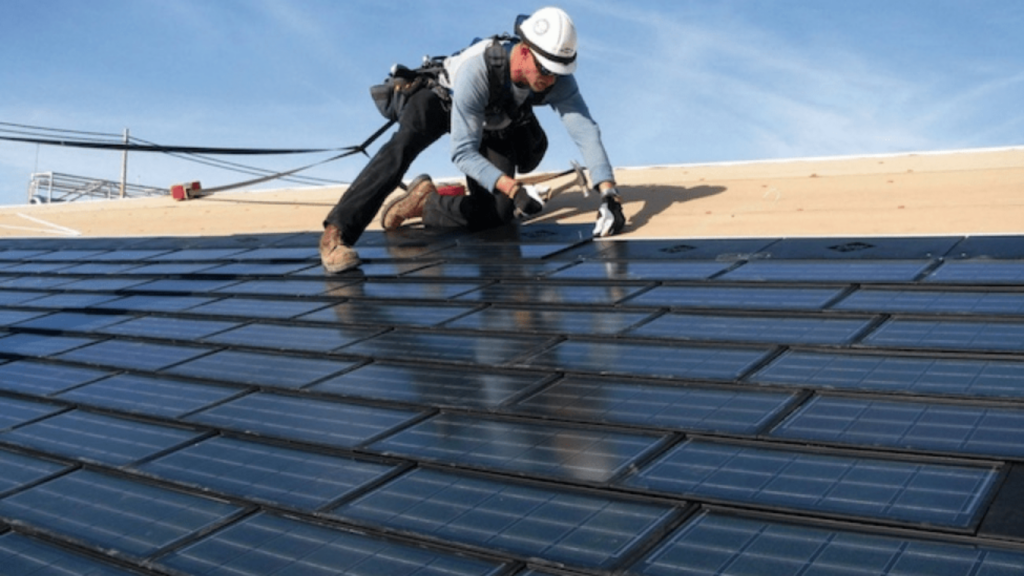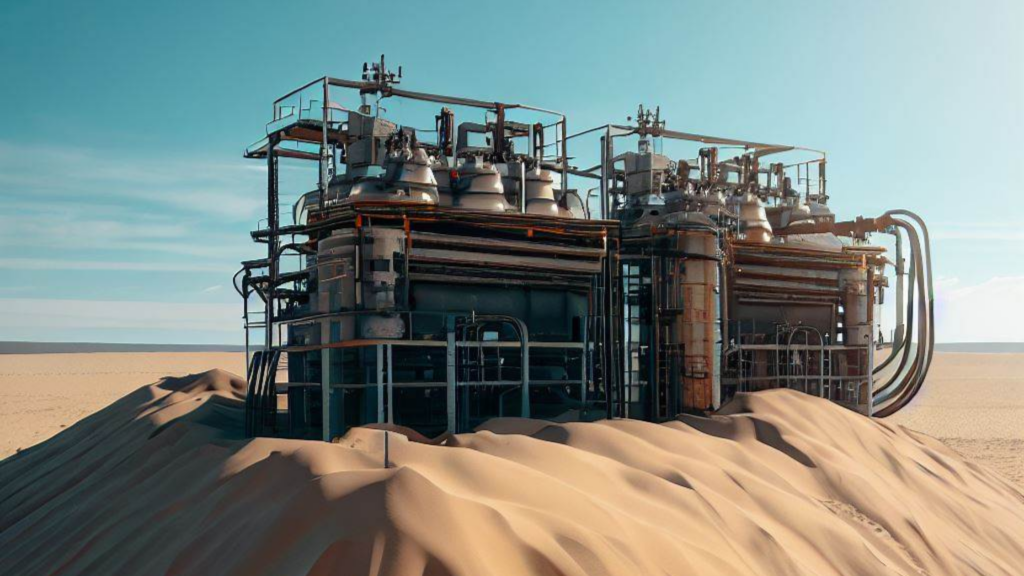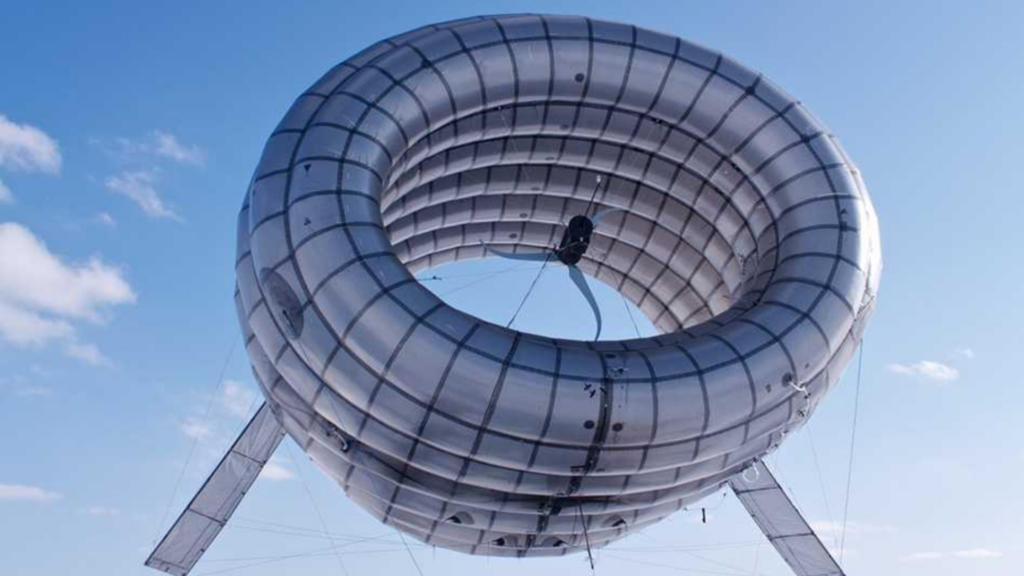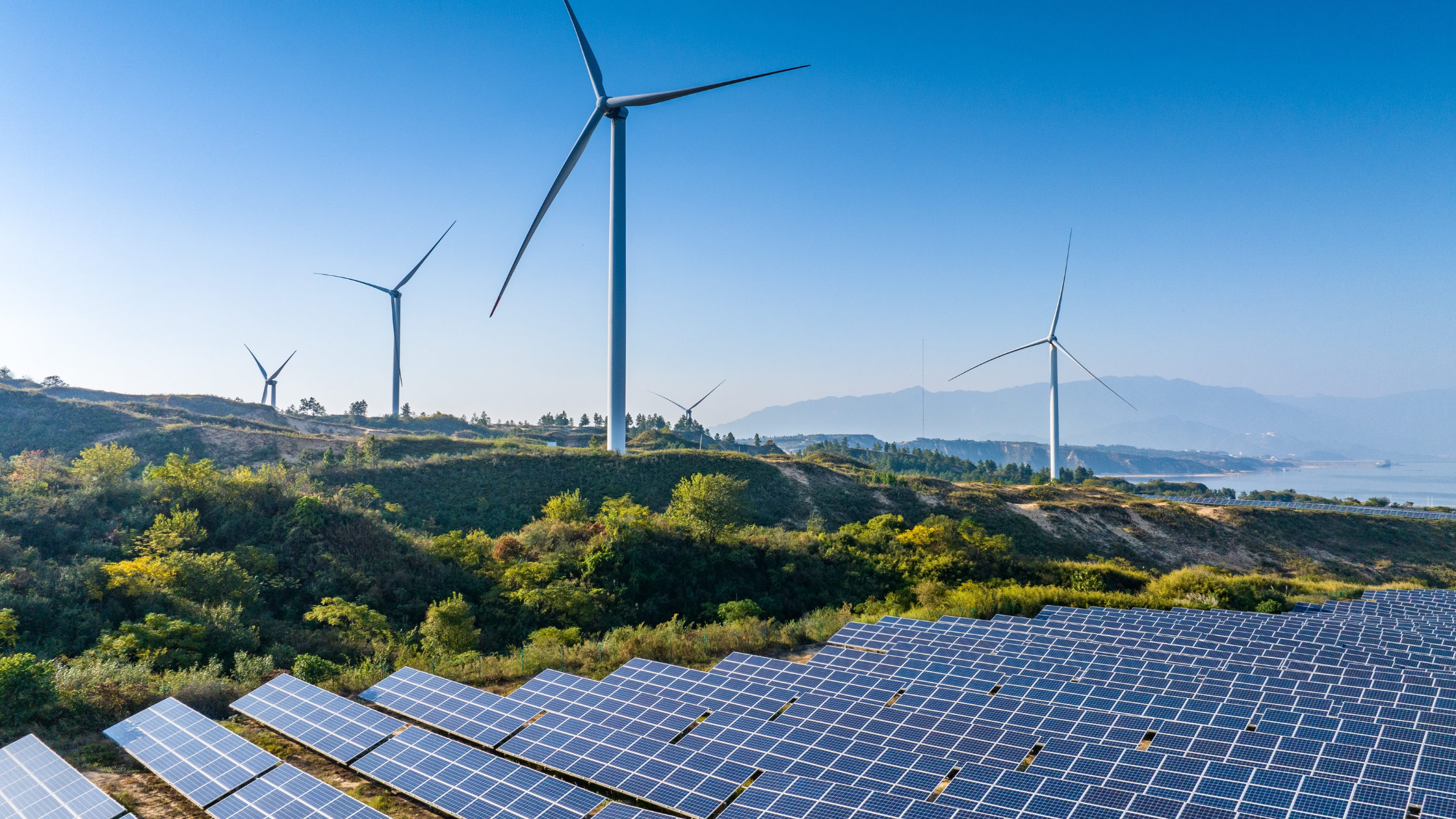In recent years, the architecture, engineering, and construction industries have made a massive shift toward sustainability. In most cases, this looks like electrified tools and more sustainable building materials, but energy companies are joining the ranks, offering unique ways to make the built world more eco-friendly. Companies are leaning into solar-powered shingles, hydrogen fuel cells, sand batteries, and solar windows to meet today’s building demands and the sustainability practices needed for the future.
Sustainability in construction
As our population increases, the need for cleaner energy does, too, meaning the construction industry must meet the demand for sustainable alternatives to fossil fuels. While the industry has long harnessed wind and solar power, groundbreaking new energy alternatives like sand and hydrogen positively impact the energy sector.
Until recently, there were very few solutions for what the construction industry could do to slow the climate crisis. In 2021, the commercial and residential construction industry was responsible for 37% of all process-related carbon dioxide emissions. While companies have a responsibility to innovate with more sustainable solutions, consumer demand for them to fast-track development also needs to be present.
Here’s how that’s shaping up.
8 innovations paving the way for alternative energy
1. Solar-powered shingles

Solar shingles use a technology known as photovoltaic (PV) panels, which have slowly increased in adoption throughout the United States. These panels absorb sunlight and transfer it into an electrical current, which is then extracted through metal contacts and converted into usable electricity.
While still a newer technology, experts predict that roughly 18% of households in America will use some type of solar power by 2032. The panels look like traditional shingles and are capable of withstanding harsh weather. They’re thinner and more flexible than solar panels and could lower the average utility bill from 40% to 70%. Each tile is individually sealed with rubber to prevent water from entering and disrupting the technology.
2. Smart grids
Smart grids are electricity networks that manage and monitor the flow of electricity with advanced technology. This technology could involve a multitude of energy sources, including:
- Centralized power plants: Traditional nuclear power plants could generate energy to power a smart grid or network of smart grids.
- Distributed Energy Resources (DERs): Include wind turbines, solar panels, electric vehicles, and other eco-friendly storage systems.
Smart grids power homes, commercial buildings, and municipalities. They allow consumers to automate their energy management and integrate their renewable energy sources more effectively. This energy storage system benefits construction teams by mitigating intermittencies by accumulating excess power for potential outages. It can also significantly improve disaster communications in moments of bad weather.
Managing energy will become a higher priority with the increased adoption of electric vehicles, as more homes and offices are installing chargers. The U.S. currently has over 61,000 public charging stations, so efficiently managing electric energy going forward is crucial.
3. Hydrogen fuel cells
Electric vehicles are becoming more commonplace in the construction industry as more companies commit to electrification efforts. The next wave of electrified equipment could be a range of Fuel-Cell Electric Vehicles (FCEVs) that utilize hydrogen power. FCEVs aid the construction industry through short refueling times and reduce gas-powered operations.
Hydrogen power could also work with wind, solar, and geothermal systems to meet the high energy demand of the AEC space and beyond. Research suggests that hydrogen fuel cells could entirely transform energy production in commercial buildings and on-site energy generation and drastically reduce the carbon footprint of existing projects and construction sites. Aside from the energy perks, hydrogen also brings lower maintenance costs, which are crucial for building owners and managers.
4. Sand batteries

Sand batteries utilize natural resources like sand to improve sustainability efforts and effectively store energy surpluses. These batteries store power transformed as heat and can maintain it for months on end. The batteries must reach at least 600 degrees Celsius to be operational, and one industrial-sized sand battery can hold up to 100 megawatt-hours (MWh), which could be enough to heat small towns in the wintertime.
The Vatajankoski power plant in Finland invented the world’s first industrial-sized sand battery. It’s a towering 23-ft steel container filled with 100 tonnes of builders’ sand, a fan, and two district heating pipes. A resistance heater heats the air inside the sand, enabling the battery to function and travel through heat exchange pipes. Thick insulation surrounds the sand, ensuring it doesn’t lose heat and functionality. The battery stores 8 MWh when fully charged.
5. Solar windows
Solar windows are double the energy efficiency of regular windows. They determine a building’s thermal efficiency and effectiveness, and their solar power capabilities maximize energy production. These windows are less impactful than PV solar panels on your roof or solar-powered shingles but are a great supplementary energy solution that compounds nicely with your home’s primary source of energy production.
These windows contain mini PV panels in the transparent coating, transforming the sun’s energy into usable power for a commercial building or home. Some of that light transfers through the window pane, allowing it to act as a regular window, but they decrease the energy production compared to traditional solar panels. While these windows aren’t widely available commercially, companies increasingly seek to integrate the technology into future projects.
6. Asphalt solar collectors
Asphalt is currently the standard choice for building quality roads. It is 100% recyclable and provides top-notch skid resistance, making it safer for people on and off their worksite. Research in the solar space has delved into the impact of asphalt solar collectors (ASCs) on heat islands in cities. The ASCs harness the sun’s heat and disperse it more evenly, reducing the harshness and damage that heat islands create. Their findings show that they not only aid in preventing structural damage to the roads but also act as powerful energy collectors.
7. Solar fuel
Aside from hydrogen power, experts in construction sustainability are also looking at more solar fuel options. Solar fuel converts carbon dioxide and other chemical feedstocks into stable fuels. This fuel source is compatible with current infrastructure, making the integration seamless and lowering potential replacement costs.
Solar fuel hasn’t quite hit the mainstream market, but it is on track to be a cost-effective option for future construction projects. Typical applications for solar fuels include power generation, transportation, residential use, and industrial processes.
8. Airborne wind energy

While wind turbines are a very common way to harness energy, they are also challenging to use in areas that lack the space to support them. This issue has inspired the innovation of airborne wind energy systems, which generate and store power while suspended in the air.
These wind energy systems come in a few forms. Some are set up to fly in a transverse direction or a crosswind, allowing them to reach altitudes of 656 feet. Others, such as aerofoil kites, remain connected to a traditional stationary turbine and supply it with stored energy. In some cases, airborne wind energy systems are also utilized to generate power on board an aircraft.
According to the DOE, this system can harness as much energy as the regular grounded turbines. However, they emphasize that the technology needs additional developments. They suspect that most forms of airborne wind energy will not replace conventional turbines but may supplement smaller operations like remote islands.
Bottom line
The AEC industry’s commitment to sustainability doesn’t have to end with electrified vehicles, battery-powered tools, and sustainable building materials. By utilizing innovative energy sources like smart grids, sand batteries, solar panels, and solar fuel, companies can take these unconventional alternative energy methods to the mainstream and reduce their environmental impact.
Like this and want more? Subscribe to our newsletter for more on alternative energy and construction innovation.




2 comments